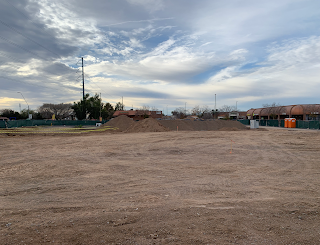What Phoenix will be like in the future with driverless cars
Let's time-travel into the future to Phoenix, Arizona with driverless cars, which I predict will be as much a revolution to the city as when "horseless carriages" first appeared. Horseless carriages, or "auto-mobiles" changed not only the way that Phoenix looked, but also how the people living there thought.
Since I'm interested in history, and technology, I like to imagine what the future will feel like when most people have no memory what came before. Speaking for myself, I can't really imagine Phoenix before cars, but it was there for a long time, with horses, and street cars, going back to the 1880s. The first car didn't appear in Phoenix until 1904, and so people at that time really couldn't imagine how much that piece of technology would change their city.
But instead of looking backwards, let's look forwards. And one of the things we'll have to do is stop calling them "driverless cars". That would be as silly as calling ATM machines "teller-less machines", or elevators "operator-less elevators". And how many people nowadays say "cordless phones"? I'm pretty sure the name "car" will remain, which has adapted from trains (people ride in railroad cars), to trolleys (which were usually called "Street Cars"). So the word car will remain.
Roads and freeways will still be needed for the cars, but the cars won't require the kind of space of parking garages. Cars will drop people off at their destination, and then either go park themselves, or keep roaming around. And people won't need to walk from a building to a parking lot, which means that some people will do even less walking than they do now.
But it's the walking that fascinates me the most. I've always been an urban hiker, and the thought of being surrounded by robots who would always give the right of way to a pedestrian fascinates me. The cars would be robots, and they would, of course, have the three laws of robotics written into them, which are: A robot may not injure a human being or, through inaction, allow a human being to come to harm. A robot must obey orders given it by human beings except where such orders would conflict with the First Law. A robot must protect its own existence as long as such protection does not conflict with the First or Second Law.
There will be plenty for the old-timers to talk about to amaze the young 'uns. They can talk about the death toll on the highways, the risk of having one too many glasses of wine at a restaurant and getting what was called a DUI (Driving Under the Influence). They can talk about the dangers of walking around a dark parking garage at night, or the hazards of walking across a parking lot in the middle of summer, with temperatures over 100 degrees. The list will go on and on, and hopefully the younger generation will believe at least some of it. It will sound pretty outrageous, and probably be hard to believe.
Image at the top of this post: Arizona Auto Parts in the 1940s, 4th Avenue and Adams, Phoenix, Arizona.
If you liked this article, and would like to see more, please consider subscribing to history adventuring on Patreon. If you're already a subscriber, thank you! You make this happen!
Click here to become a Patron!
History adventuring posts are shared there daily. The basic tier is a dollar a month, and the PhD tier, which includes "then and now" photos, billboards, aerials, videos, and super high-definition photos, is five dollars a month, and is discounted for seniors, veterans, and students.




Comments
Post a Comment